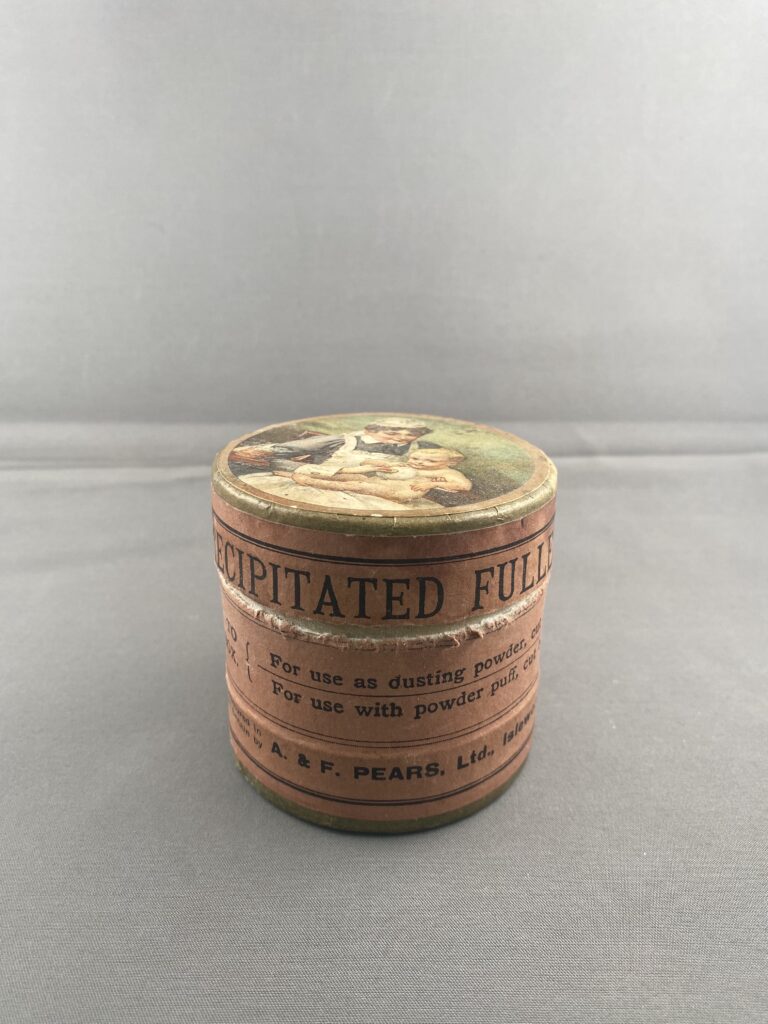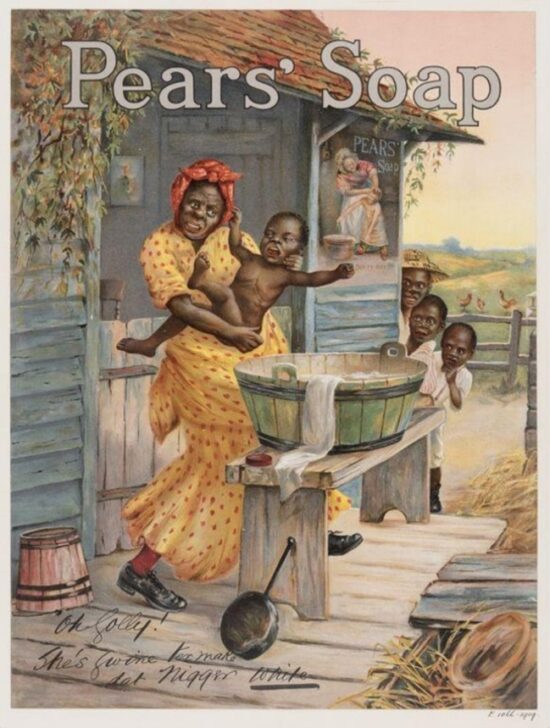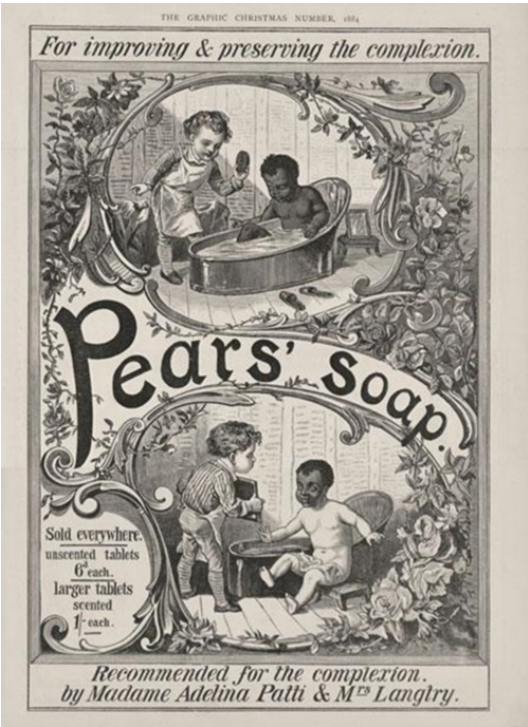Unravelling History. The Legacy of A&F Pears Baby Products
What is so interesting about a baby powder box? One might ask this question when shown this object. This blog entry intends to show how the deceptively simple artefact possesses a fascinating, troubling and unexpected legacy.

We begin with the company itself, A & F. Pears Ltd, originally in Isleworth, England, which has since been rebranded to Pears. The company was founded by Andrew Pears, following his migration from Cornwall to London in the late 1780s. Within this journey, he focused on creating a gentler soap formula, contrasting leading products at the time. By trialling soap purification, he met his goal. His experimentations resulted in a product composed of glycerine and other natural products leading to the revolutionary creation of the first transparent soap in 1807. Another key date in this history is 1835 when Francis Pears (Andrew Pear’s grandson) addition to the business created A & F. Pears Ltd. His integration meant that this company became the first registered brand in the world and the oldest continuing brand today.
When Mary Frances (Francis Pear’s oldest daughter) married Thomas James Barrett in 1864, he became a partner shortly afterwards and ushered in several innovative advertising tactics:
- Filling newspaper advertising spaces with the brand name to avoid restrictions concerning illustrated advertisements.
- Gaining possession of artworks to use in advertisements.
- Employing various publicity stunts.
- Release of the now–famous Pear’s Annual from 1891 to 1926 mainly came in large tabloid format and predominantly illustrated with a selection of Christmas features and stories.
However, like many of its counterparts around the turn of the century (and since), Pears deployed racist stereotypes in their marketing. Historical advertisements from this company frequently communicated the racist conflation of whiteness with cleanliness. Several advertisements (such as the ones below) depicted products from this brand being used to change skin colour. Bregovic (2015) discusses this racist history and expands on it further by arguing that these advertisements also conflated the change in skin colour from uncivilised to civilised.

In 1914, this company became part of the Lever brothers (later becoming Unilever).
On the text of the product’s labels (figures 1 and 2), it is advised to employ it as a ‘dusting powder’ or as a ‘powder puff.’ This multi-purpose suggestion reflects the utilitarian purpose of this product when it comes to baby sanitation. Upon further research, this product is commonly viewed as the predecessor to talcum powder which is considered a gentle approach to keeping skin dry and avoiding rashes.
Bibliography
- Longhurst, A.S (2018) All You Need to Know About Fuller’s Earth. Available at: https://www.healthline.com/health/fullers-earth(Accessed 19th September 2023).
- Popovic, A., 2015. Late Victorian Scientific Racism and British Civilizing Mission in Pears’ Soap Ads. Pulse: The Journal of Science and Culture, 3(1), pp.99-112.
- Science Museum Group Collection. A and F Pears Limited 1789. Available at: A and F Pears Limited | Science Museum Group Collection (No Date) (Accessed 19th September 2023).
- Victoria and Albert Museum (2009). Available at: https://collections.vam.ac.uk/item/O828037/print-unknown/ (Accessed 19th September 2023).
- Wikipedia. Pears (soap). Available at: https://en.wikipedia.org/wiki/Pears_(soap)(No Date) (Accessed 19th September 2023).


